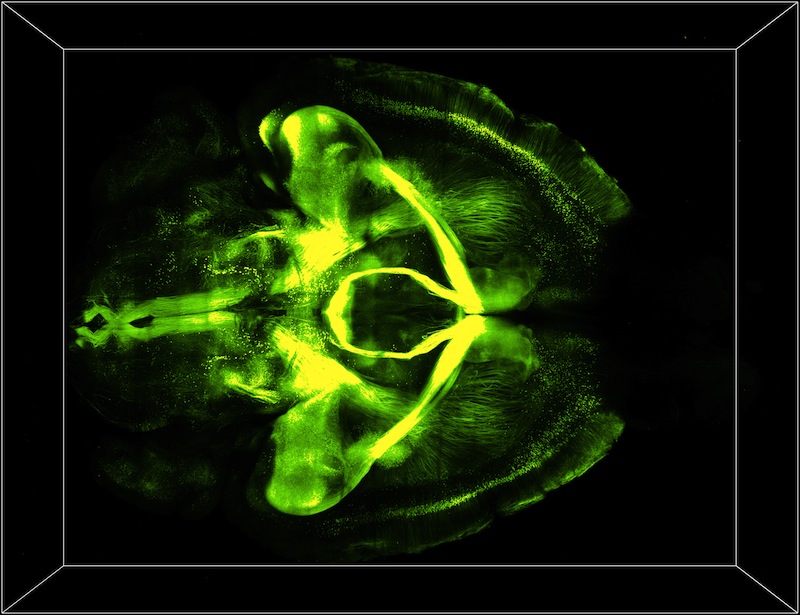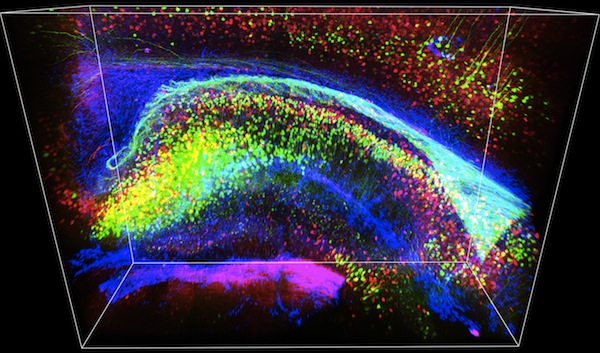
Stanford Scientists Render Mouse Brain Transparent, Offering New Possibilities For 3D Analysis
The importance of studying the brain in three dimentions is something we understand at MBF Bioscience. Every day scientists around the world use our products to reconstruct neurons and analyze brain cells in 3D. That’s why we’re excited to hear about the new possibilities for whole brain analysis coming out of Dr. Karl Deisseroth’s lab at Stanford University.
A press release issued last week describes a whole-organ imaging process called CLARITY that made a postmortem whole mouse brain transparent.
The researchers used chemical engineering to replace lipids (the fatty elements of brain tissue that give the organ its form) with a hydrogel solution that congeals into a supportive mesh. After removing the opaque, impermeable lipids, Deisseroth’s team was left with a transparent brain with all its important structures intact.
After rendering the mouse brain transparent, the scientists used fluorescent antibodies to light up individual neural circuits, allowing for focused analysis of cellular structures as well as relationships between cells and their circuits.
“Studying intact systems with this sort of molecular resolution and global scope — to be able to see the fine detail and the big picture at the same time — has been a major unmet goal in biology, and a goal that CLARITY begins to address,” Deisseroth said in the press release.
Here at MBF Bioscience, we tested our Neurolucida software for neuron reconstruction with a sample image stack from a brain processed with a similar method. “We used Neurolucida perform automatic neuron reconstruction on a cell in an image stack representing a distance of over 1mm. Neurolucida was able to reconstruct dendritic arbors through the 1mm-stack in minutes. We’re excited to see how researchers in other labs will use our software along with whole-brain imaging in the future,” said MBF Bioscience President Jack Glaser.
Watch a video about the technique at nature.com.
Chung, K., Wallace, J., Kim, S. Y., Kalyanasundaram, S., Andalman, A. S., Davidson, T. J., … & Deisseroth, K. (2013). Structural and molecular interrogation of intact biological systems. Nature. doi: 10.1038/nature12107
Images provided by Dr. Kwanghun Chung, first author of the study.




